My first encounter with plov, the Uzbek national dish, wasn’t on the steppes of central Asia. Sadly, I’ve yet to go.
Instead, it was at an Uyghur restaurant in Istanbul. Here, it was disguised under its Turkish name, özbek pilavı. Uzbeks and Uyghurs are both Turkish ethnic groups, so the dish’s appearance on the menu was no surprise.
In their wonderful book Samarkand, Caroline Eden and Eleanor Ford tell us that – according to legend, at least – the dish came about when Alexander the Great demanded an easy but filling meal for his soldiers. Centered around rice, onions, carrots and meats, it’s easy to see that plov would have satisfied the demands of an army!
Today, plov is an integral part of cuisines across Central Asia and the Caucasus. The Uzbeks, however, Eden and Ford note, are the self-proclaimed masters of it.
Like many other historic dishes, plov is more than just food. A lot more. The dish is front and centre at celebrations and large gatherings. It’s a source of pride and community, often cooked outdoors in large cauldrons. The various local versions reflect the history of the region and the various cultures that have passed through the Silk Road.
The version usually served in Istanbul is the most basic, with little else than rice, onions, meat and carrots. Other versions add spices, eggs, vegetables or flavourings. Eden and Ford offer up three different recipes in their book, which I cannot recommend enough for a glimpse into the food cultures of Central Asia. Their Samarkand plov, featuring quails eggs, is delectable, and I’ve got my eyes set on the Rosh Hashanah plov with barberries, pomegranate and quince for winter.
My version of a more classic uzbek plov is adapted for a modern city lifestyle, rather than an outdoor life at high altitudes. I’ve therefore reduced the amounts of fat considerably. Using a leaner cut of lamb makes it far quicker to cook. I also use a little more meat than is perhaps customary in traditional recipes.
The end result is a wonderful pilaff that comes together in half an hour. It’s still a hearty dish, though, so make sure to serve with a zingy salad. A big bowl of yoghurt alongside is also welcome.
I hope you enjoy this recipe as much as I do!
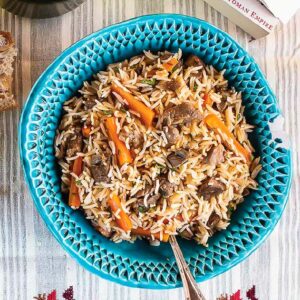
Uzbek plov (Rice with lamb & carrots)
Ingredients
- 350 g basmati rice
- 2 Tbsp olive oil
- 500 g lamb meat, use a tender cut like leg, cut into 2 cm (⅘ in) cubes
- 1½ Tbsp butter
- 2 medium onion, finely chopped
- 2 tsp whole cumin seeds
- 4 garlic cloves, finely chopped
- 350 g carrot, peeled and cut into 4–6 wedges lengthwise, then sliced into 5 cm (2 in) sticks
- 2 tsp pul biber (Aleppo pepper)
- 2 Tbsp finely chopped flat-leaf parsley, optional
- water
- salt and pepper
How I make it
- Bring a pot of lightly salted water to the boil. Rinse the basmati rice thoroughly in several changes of water. Drain, then add to the boiling water. Cook for 6 minutes. Drain again.
- Meanwhile, heat a heavy-bottomed pot to high. Season the lamb with salt and pepper, then brown in half the olive oil (1 Tbsp) in as many batches as necessary. Stir occasionally, but not continuously—otherwise the meat won’t take colour. Remove the meat, then add 125 ml (just under ½ cup) water to the pan. Mix with all the juices and crusty bits left in the pan. Transfer to a bowl.
- Reduce the heat to medium. Fry the onions and cumin seeds in the remaining olive oil (1 Tbsp) and the butter, stirring regularly, until the onions just begin to colour, 10–15 minutes.
- Add the garlic and cook for another minute, stirring constantly.
- Reduce the heat to low. Add the browned meat, then layer the carrots, pul biber (Aleppo pepper) and parboiled rice on top. Pour in the reserved frying pan water. Use the handle of a spoon to poke 5–6 holes through the rice all the way to the bottom of the pot. This helps the rice steam more evenly.
- Wrap a kitchen towel around the lid and place it on the pot. Leave over a low heat until the rice is tender, 10–15 minutes. Remove from the heat and leave to rest for a few minutes.
- Traditionally, the dish is served with the rice first and some meat on top, but I like to mix it all together before serving, adding a bit of flat-leaf parsley for colour and freshness.


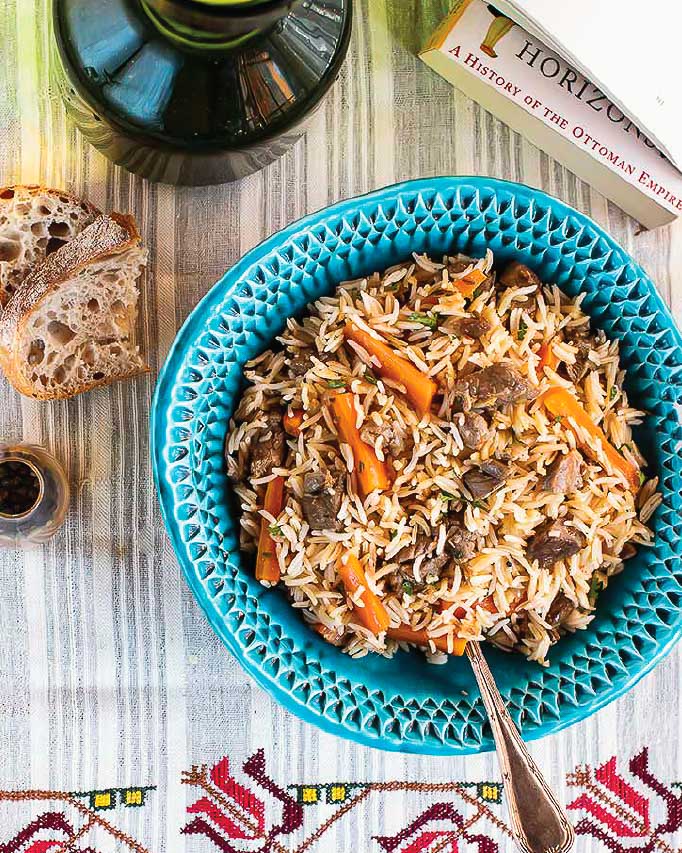


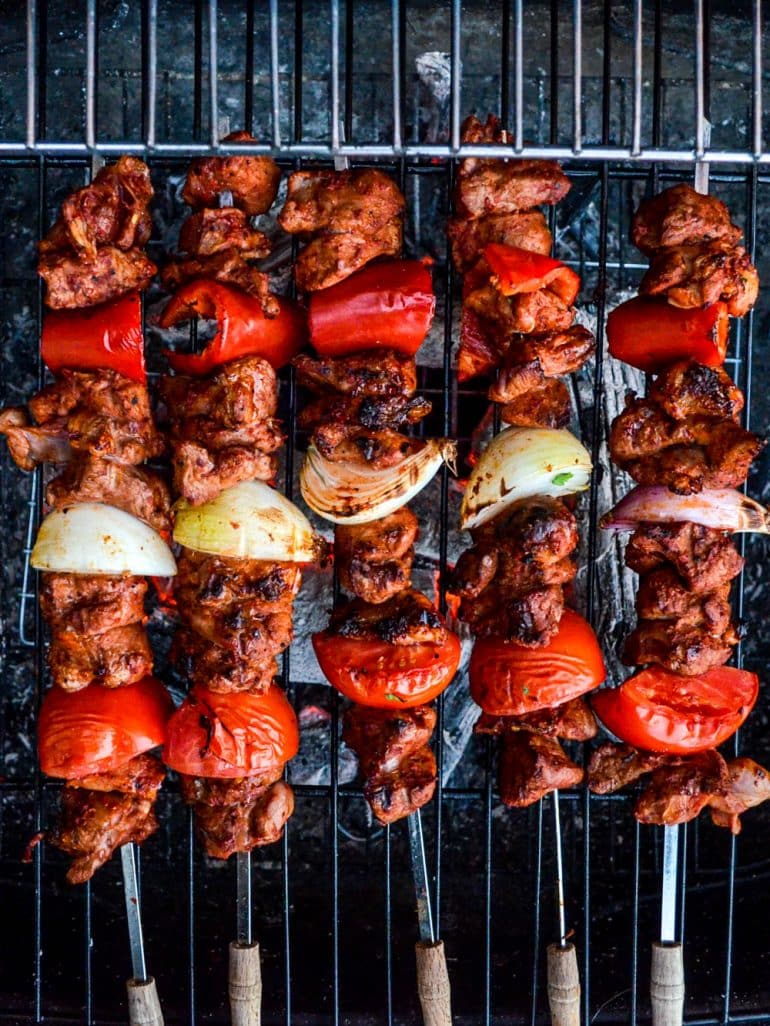
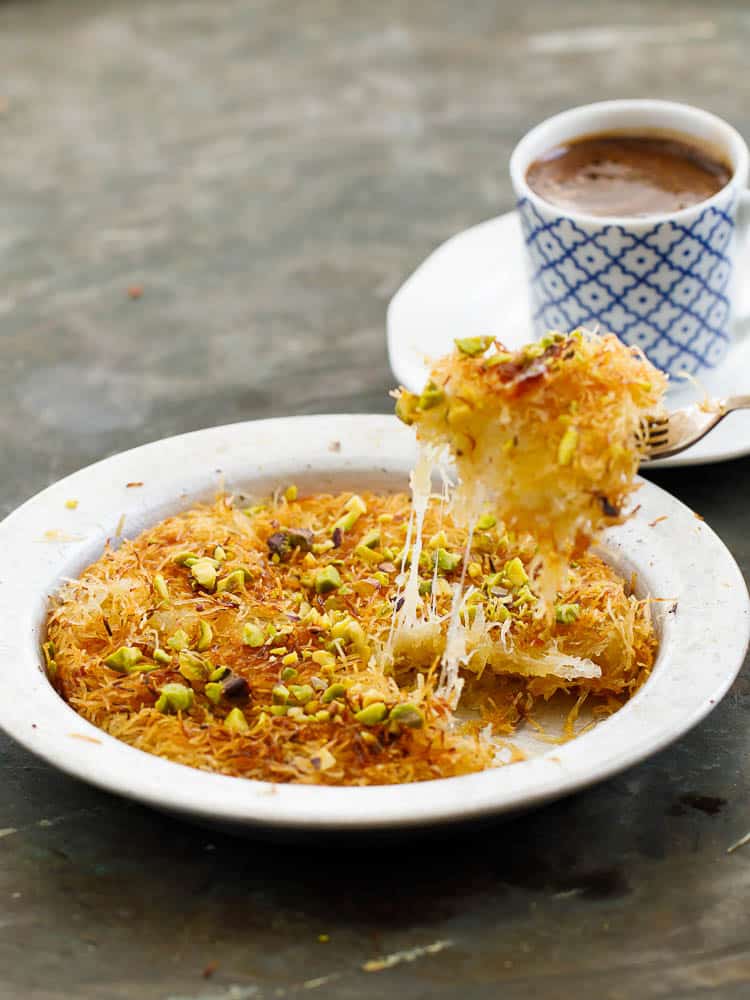
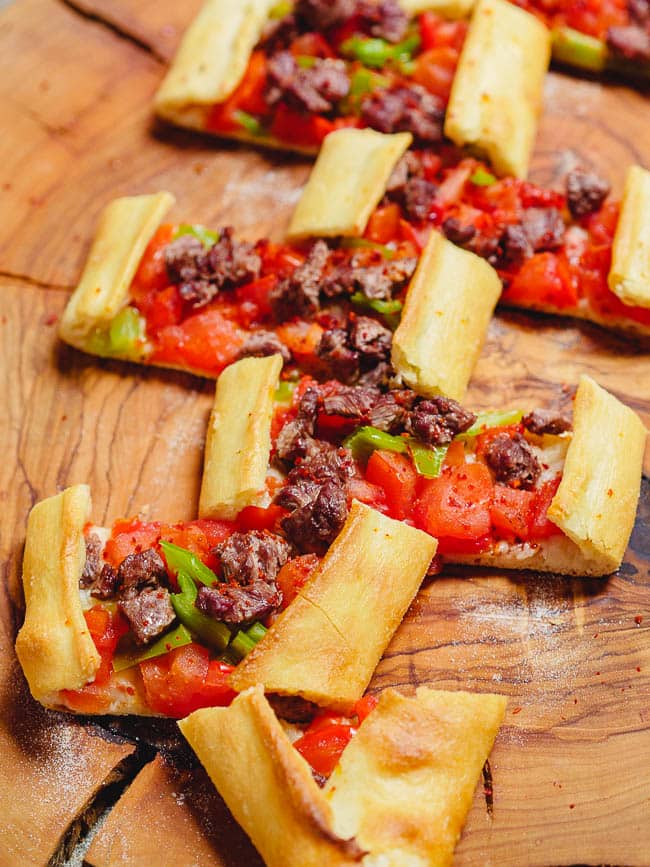
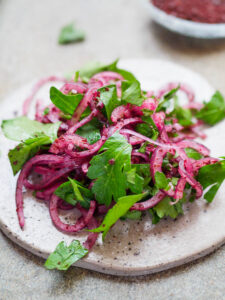
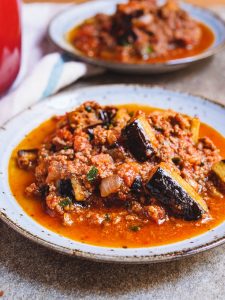
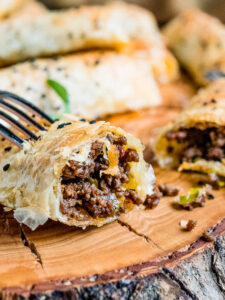




One Response
I made this dish when you sent the recipe out. It was simple to make and so tasty. Thank you!